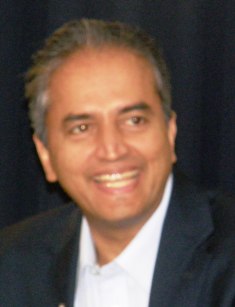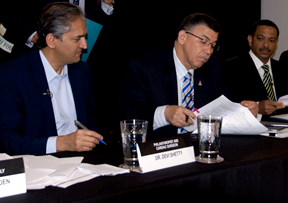Archive for April, 2010

Drug council issues SOS for volunteers
 (CNS): The National Drug Council (NDC);the body responsible for the oversight of the country’s anti-drug strategy has issued an urgent call for 35 additional volunteer fieldwork assistants to help with the Cayman Islands Student Drug Use Survey (CISDUS) 2010. The work will begin on the morning of Tuesday 13 April and the NDC says it needs more hands on deck to help start the interviews with students the first of which will be at schools between 11:15am to 12:45pm.
(CNS): The National Drug Council (NDC);the body responsible for the oversight of the country’s anti-drug strategy has issued an urgent call for 35 additional volunteer fieldwork assistants to help with the Cayman Islands Student Drug Use Survey (CISDUS) 2010. The work will begin on the morning of Tuesday 13 April and the NDC says it needs more hands on deck to help start the interviews with students the first of which will be at schools between 11:15am to 12:45pm.

Teen arrested for murder
 (CNS): Police confirmed this morning that a 16-year-old boy has been arrested and is currently detained on suspicion of murder following a police operation in the West Bay area earlier this morning. At About 7:20 am on Thursday 8 April the teenager was arrested in connection with the fatal shooting of Marcos Mauricio Gauman Duran who was shot and killed in West Bay, on Thursday 11 March, police stated. Duran an Ecuadorian national from George Town was killed as he was visiting an apartment on Maliwinas Way.
(CNS): Police confirmed this morning that a 16-year-old boy has been arrested and is currently detained on suspicion of murder following a police operation in the West Bay area earlier this morning. At About 7:20 am on Thursday 8 April the teenager was arrested in connection with the fatal shooting of Marcos Mauricio Gauman Duran who was shot and killed in West Bay, on Thursday 11 March, police stated. Duran an Ecuadorian national from George Town was killed as he was visiting an apartment on Maliwinas Way.

Cayman teens lazy, says study
 (CNS): According to research conducted by the World Health Organization in Geneva, in a study of more than 70,000 young teens from 34 countries, teenagers from the Cayman Islands and St. Lucia were found to be the least active kids. Some 58 percent of boys and 64 percent of girls in Cayman said they spent three hours a day in sedentary activity. The results come at a time when obesity and diabetes is on the rise among local children. Health Minster Mark Scotland said in his World Health Day message yesterday (7 April) that almost 38 percent of school students aged between 11 and 14 are overweight.
(CNS): According to research conducted by the World Health Organization in Geneva, in a study of more than 70,000 young teens from 34 countries, teenagers from the Cayman Islands and St. Lucia were found to be the least active kids. Some 58 percent of boys and 64 percent of girls in Cayman said they spent three hours a day in sedentary activity. The results come at a time when obesity and diabetes is on the rise among local children. Health Minster Mark Scotland said in his World Health Day message yesterday (7 April) that almost 38 percent of school students aged between 11 and 14 are overweight.

Juries to hear clamping cases
 (CNS): Two separate cases involving drivers who were wheel clamped by local firms will have their cases heard before juries. In one case coming before the Grand Court a defendant is accused of theft regarding a wheel clamp and in a second case a man is accused of damage to property as a result of their respective responses to having their cars disabled by the wheel clamping firm. The issue of wheel clamping is becoming increasingly controversial but these are the first two cases in which drivers who have taken action against being clamped are facing prosecution. Both defendants have elected to have their cases heard before a jury. (Photo by Dennie Warren Jr)
(CNS): Two separate cases involving drivers who were wheel clamped by local firms will have their cases heard before juries. In one case coming before the Grand Court a defendant is accused of theft regarding a wheel clamp and in a second case a man is accused of damage to property as a result of their respective responses to having their cars disabled by the wheel clamping firm. The issue of wheel clamping is becoming increasingly controversial but these are the first two cases in which drivers who have taken action against being clamped are facing prosecution. Both defendants have elected to have their cases heard before a jury. (Photo by Dennie Warren Jr)

Security adds travel time for US Air passengers
 (CNS): The Cayman Islands Airports Authority (CIAA) is introducing new security measures at Owen Roberts International Airport today. From now on passengers travelling to the United States are asked to arrive at the airport three hours before their flights. The CIAA said the enhanced security procedures are in response to the requirements announced by the Transportation Security Administration (TSA), which has implemented new measures for all air carriers with international flights to the US. The latest security procedures supersede the emergency measures put in place immediately following the attempted terrorist attack on 25 December 2009.
(CNS): The Cayman Islands Airports Authority (CIAA) is introducing new security measures at Owen Roberts International Airport today. From now on passengers travelling to the United States are asked to arrive at the airport three hours before their flights. The CIAA said the enhanced security procedures are in response to the requirements announced by the Transportation Security Administration (TSA), which has implemented new measures for all air carriers with international flights to the US. The latest security procedures supersede the emergency measures put in place immediately following the attempted terrorist attack on 25 December 2009.

Cayman Finance to confer on local economy
 (CNS): The industry body which represents the country’s financial sector will be holding its inaugural Cayman Finance Summit next month to provide a platform to discuss the future of the islands economy. Cayman Finance is bringing together panelists and guest speakers to discuss issues ranging from how Cayman is viewed in the international media to the findings in the recent Miller Report. The industrybody said that experts in economics, policy development, taxation, regulation, public relations and public affairs will join together to illustrate why Cayman’s low tax model is the one that will generate the most substantive results for the people here and across the globe.
(CNS): The industry body which represents the country’s financial sector will be holding its inaugural Cayman Finance Summit next month to provide a platform to discuss the future of the islands economy. Cayman Finance is bringing together panelists and guest speakers to discuss issues ranging from how Cayman is viewed in the international media to the findings in the recent Miller Report. The industrybody said that experts in economics, policy development, taxation, regulation, public relations and public affairs will join together to illustrate why Cayman’s low tax model is the one that will generate the most substantive results for the people here and across the globe.

CIG signs deal for hospital
 (CNS): The Cayman Islands Government has now signed an agreement with the world famous cardiac surgeon Dr Devi Shetty (left) to facilitate the development of the much talked about major medical complex on Grand Cayman. The project got the official government go-ahead and the investor’s commitment at a media conference on Wednesday morning (7 April) when the celebrated doctor and the premier signed the deal and revealed more details of what is being heralded as the beginning of the Cayman Islands third economic pillar — medical tourism. Dr Shetty will be investing billions of dollars over thenext decade to create a state-of-the-art health city and medical university set to revolutionize the provisions of tertiary health care.
(CNS): The Cayman Islands Government has now signed an agreement with the world famous cardiac surgeon Dr Devi Shetty (left) to facilitate the development of the much talked about major medical complex on Grand Cayman. The project got the official government go-ahead and the investor’s commitment at a media conference on Wednesday morning (7 April) when the celebrated doctor and the premier signed the deal and revealed more details of what is being heralded as the beginning of the Cayman Islands third economic pillar — medical tourism. Dr Shetty will be investing billions of dollars over thenext decade to create a state-of-the-art health city and medical university set to revolutionize the provisions of tertiary health care.
 Dr Shetty told the local media that health care was big business, which is why it dominated elections in the UK and occupied a significant part of the American political stage. He said that worldwide the industry was worth around $4.5 trillion, with some $ 2.5 trillion of that being spent in the United States alone.
Dr Shetty told the local media that health care was big business, which is why it dominated elections in the UK and occupied a significant part of the American political stage. He said that worldwide the industry was worth around $4.5 trillion, with some $ 2.5 trillion of that being spent in the United States alone.Experts predict busy storm season for Atlantic
(CNS): Colorado State University’s hurricane forecast team have released their latest predictions for the 2010 Atlantic season and have upped the numbers since their December forecast. William Gray and Phil Klotzbach said that 2010 will be an "above-average" season with 15 named storms and eight of those becoming hurricanes. The latest report was released this morning Wednesday (7 April) when the forecasters said that El Nino conditions will dissipate by summer and that unusually warm tropical Atlantic sea surface temperatures will persist, leading to favourable conditions for hurricanes to develop and intensify.

Local man makes plans to “Rescue” Cayman
 (CNS): With the worsening economic recession, Howard Ron Rivers says there are increasing numbers of people in the Cayman Islands that are slipping through society’s safety nets and who are in need in many different ways. As a result, he wants to galvanize people into helping them. Ron believes that members of the community need to come together to offer support and assistance to each other to get people on their feet, a roof over their heads, medical assistance, a much needed car back on the road or even training in a skill to help them find work. Under the umbrella name of “Rescue”, Ron is now trying to establish an official charity that can co-ordinate this support throughout the Cayman Islands.
(CNS): With the worsening economic recession, Howard Ron Rivers says there are increasing numbers of people in the Cayman Islands that are slipping through society’s safety nets and who are in need in many different ways. As a result, he wants to galvanize people into helping them. Ron believes that members of the community need to come together to offer support and assistance to each other to get people on their feet, a roof over their heads, medical assistance, a much needed car back on the road or even training in a skill to help them find work. Under the umbrella name of “Rescue”, Ron is now trying to establish an official charity that can co-ordinate this support throughout the Cayman Islands.
The goal is not just to raise funds to help people financially but to attract volunteers who can offer their skills — be it a house repair for an elderly member of the community or debt advice to someone about to lose their house. Ron says that the Cayman Islands community needs to be a lot more supportive and he feels there are few if any places for those in need to go to find help.

Cruise business on wave of recovery
 (Businessweek): Shares of cruise operator Royal Caribbean Cruises Ltd. climbed Tuesday after a competitor reported better-than-expected results and said passengers were paying more to book vacations. Shares of the company, which owns Royal Caribbean International, Celebrity Cruises and Pullmantur, rose $1.65, or 5.3 percent, to $33.08 in afternoon trading. Royal Caribbean rival Carnival Corp. on Tuesday said more travellers are booking cruise vacations and paying higher prices for their getaways.
(Businessweek): Shares of cruise operator Royal Caribbean Cruises Ltd. climbed Tuesday after a competitor reported better-than-expected results and said passengers were paying more to book vacations. Shares of the company, which owns Royal Caribbean International, Celebrity Cruises and Pullmantur, rose $1.65, or 5.3 percent, to $33.08 in afternoon trading. Royal Caribbean rival Carnival Corp. on Tuesday said more travellers are booking cruise vacations and paying higher prices for their getaways.